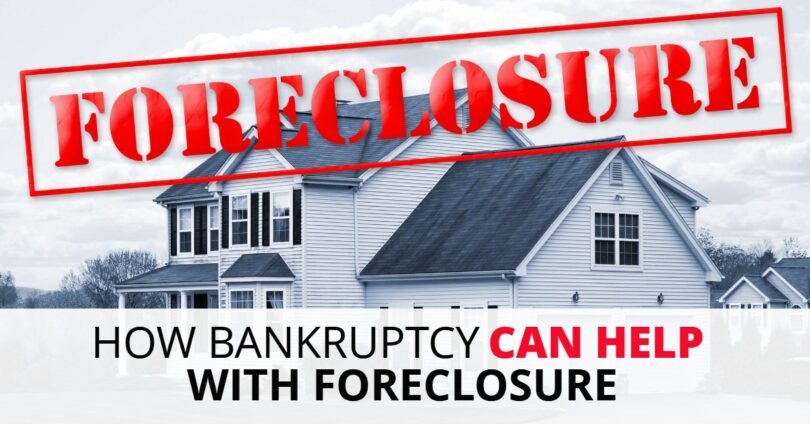How bankruptcy can help keep your home…
The foreclosure process takes time. Most creditors do not begin foreclosing until the homeowner is two to three months behind on their mortgage payments. This gives the homeowner some time to consider alternatives to foreclosure, such as a loan forbearance, short sale, or deed in lieu of foreclosure. Should all of these alternatives fail, bankruptcy may help in several different ways.
How to Delay Foreclosure with an Automatic Stay
Bankruptcy and foreclosure are both words that the average person dreads hearing. If you are facing foreclosure, however, bankruptcy can become a tool to help you keep your house.
Once you file bankruptcy, either Chapter 13 or Chapter 7, the court automatically issues an Order for Relief. This order grants you an “automatic stay”, that directs your creditors to immediately cease their collection attempts, no matter what. So, if a foreclosure sale has been scheduled for your home, it will be postponed, by law, until the bankruptcy is finalized. This usually takes about three to four months.
There are two exceptions to this buying time rule:
If the Lender Files a Motion to Lift the Stay: Unfortunately, the lender can file a motion to lift the stay, which asks permission from the bankruptcy court to continue with the foreclosure sale. If this is granted, you may not receive the extra three to four months of time. However, bankruptcy normally still postpones the sale by about two months or more, or even longer if the lender does not act fast in filing the motion to lift the stay.
If the Foreclosure Notice has Already Been Filed: Most states have laws that require lenders to give homeowners a certain amount of notice before selling their property. A bankruptcy’s automatic stay will NOT stop the clock on this advance notice. For instance, California law requires a lender to give the homeowner at least three months notice before selling the home. If a California resident receives this three month notice, and then files for bankruptcy two months later, the three month period would have passed after being in bankruptcy for only one month. As a result, the lender could file a motion to lift the stay and ask the court’s permission to schedule the foreclosure.
How To Use Chapter 13 Bankruptcy To Help You
What Chapter 13 Means for Bankruptcy and Foreclosure: Chapter 13 bankruptcy allows you to set up a repayment plan to pay off the past due payments, or “arrearage”. You can propose the length of time for repayment, but keep in mind that you’ll need sufficient income to pay BOTH your past due payments AND your current mortgage payments at the same time. So long as you make all of the required payments for the length of the repayment plan, you will avoid foreclosure and be able to stay in your home.
2nd and 3rd Mortgage Payments: Chapter 13 can also help eliminate payments on second or third mortgages. Typically, Chapter 13 entitles bankruptcy courts to recategorize second and third mortgages as unsecured debt. Under Chapter 13, unsecured debt takes last priority and usually does not have to be paid back. This recategorizing process is possible if your first mortgage is secured by the entire value of your home since this means that there is no remaining equity in your home to secure the second and third mortgages.
Article references:
www.bankruptcy.findlaw.com/what-is-bankruptcy/facing-foreclosure-how-bankruptcy-can-help.html







